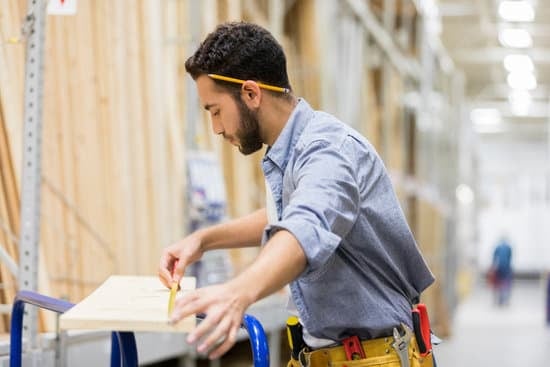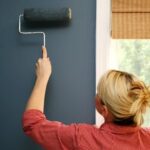When it comes to enhancing our homes, the concept of home improvement often conjures images of renovated kitchens, updated bathrooms, or new landscaping. But what about the roof? Is a new roof considered a home improvement? In this blog post, we will delve into this intriguing question and explore the true value of a new roof as a home improvement project.
Home improvements play a crucial role in not only increasing property value but also enhancing the overall aesthetics of our homes. Whether it’s upgrading outdated features or adding modern conveniences, homeowners understand the importance of investing in their properties. However, when considering home improvements, many may overlook the significance of a new roof.
A well-maintained roof holds considerable significance in maintaining a secure and comfortable living environment. Not only does it protect us from external elements like rain, wind, and snow but it also contributes to the overall aesthetic appeal of our homes. So, is it time to rethink what truly qualifies as a home improvement? Let’s dive deeper into why a new roof shouldn’t be overlooked and how it can enhance both property value and curb appeal.
Understanding the Importance of Home Improvements
When it comes to homeownership, making improvements to your home is a vital component. Home improvements not only enhance the property value but also contribute to the overall aesthetics and quality of living. Whether it’s upgrading the kitchen, remodeling a bathroom, or adding a fresh coat of paint, these projects have numerous advantages.
Advantages of Home Improvements:
- Increased Property Value: One of the most significant benefits of making home improvements is the potential increase in property value. By investing in upgrades and renovations, you can attract potential buyers and command a higher price when selling your home. It’s important to choose projects that offer a good return on investment and align with current market trends.
- Energy Efficiency: Another advantage of home improvements is increased energy efficiency. Upgrading appliances, windows, and insulation can help reduce energy consumption and lower utility bills. Energy-efficient homes are not only environmentally friendly but also attractive to buyers who are looking for cost-effective ways to live.
- Improved Curb Appeal: The exterior appearance of your home plays a crucial role in its overall appeal. Home improvements such as landscaping, painting, and adding new siding or roofing materials can significantly enhance curb appeal. A visually appealing home stands out in the neighborhood and creates a positive first impression for visitors and potential buyers.
Evaluating the Significance of a Roof in Home Improvement Projects
Roofs play a crucial role in maintaining a secure and comfortable living environment. As homeowners, we often focus on interior renovations when it comes to home improvements, overlooking the importance of a well-maintained roof. However, it is essential to recognize the significance of the roof in home improvement projects.
One of the primary functions of a roof is to protect our homes from external elements such as rain, snow, wind, and sunlight. A deteriorating or damaged roof can lead to leaks, structural damage, and safety concerns. By investing in a new roof, homeowners can ensure that their property remains structurally sound and protected from potential hazards.
In addition to its practicality, the impact of a well-maintained roof on a home’s overall aesthetics should not be underestimated. The roof makes up a significant portion of our home’s exterior and greatly contributes to its curb appeal.
With various roofing materials and styles available in the market today, homeowners have the opportunity to choose a new roof that complements their home’s architectural style and enhances its visual appeal. Whether it is sleek metal roofing or traditional clay tiles, upgrading your roof can breathe new life into your home’s exterior.
Consideration should also be given to the long-term financial benefits that come with investing in a new roof. Studies have shown that replacing an old or worn-out roof can significantly increase property value.
According to Remodeling Magazine’s Cost vs Value report, homeowners typically recoup around 62% to 72% of their roofing investment when selling their homes. A new roof adds not only monetary value but also peace of mind for potential buyers knowing they won’t have to worry about future repair costs.
The Financial Aspect
The financial aspect of home improvements is often a crucial consideration for homeowners. When it comes to determining whether a new roof qualifies as a home improvement, one important factor to consider is the effect it has on property value.
Several studies and statistics have shown a correlation between a new roof and increased property value. A well-maintained roof can make a significant impact on potential buyers when selling a home. In fact, according to Remodeling magazine’s Cost vs. Value report, homeowners can expect to recoup an average of 66% of the cost of a new roof when they sell their property.
Investing in a new roof can yield substantial returns on investment, especially if the existing roof is old or damaged. Potential buyers often view a new roof as a sign of proper maintenance and care for the entire property. It provides them with reassurance that they won’t have to worry about major roofing repairs or replacements in the near future.
Additionally, insurance companies may offer lower premiums for homes with newer roofs, as they are less likely to experience leaks or other related issues. This can provide further financial benefit for homeowners in terms of reduced insurance costs.
Enhanced Energy Efficiency
One of the significant advantages of investing in a new roof as a home improvement project is the enhanced energy efficiency it provides. A new roof can improve insulation and reduce energy consumption, resulting in lower utility bills. Additionally, it has ecological benefits by reducing carbon emissions and promoting sustainability.
When considering energy efficiency, one of the key benefits of a new roof is its ability to improve insulation. Poorly insulated roofs can cause excessive heat loss during winter months and allow hot air to penetrate the interior during summer months.
This can lead to increased heating and cooling costs as homeowners struggle to maintain a comfortable temperature inside their homes. With a new roof installation, proper insulation materials can be used to create an effective thermal barrier, preventing heat transfer and reducing the need for excessive heating or cooling.
Lower utility bills are another economic benefit of an energy-efficient roof. By improving insulation, a new roof reduces the dependency on heating and cooling systems, resulting in reduced energy consumption. According to studies conducted by Energy Star, an efficient roof can save homeowners up to 30% on their utility bills. Over time, these savings can add up significantly, making a new roof more cost-effective in the long run.
Apart from the economic benefits, an eco-friendly roof also contributes to environmental sustainability. Traditional roofing materials such as asphalt shingles have adverse effects on the environment due to production processes that involve resource-intensive mining and high carbon emissions.
On the other hand, modern roofing materials like metal roofs or cool roofs made from reflective materials help reduce energy consumption by reflecting sunlight away from the building and lowering overall heat absorption. This not only reduces carbon emissions but also minimizes the urban heat island effect.
In summary, investing in a new roof as part of home improvement yields both ecological and economic benefits through enhanced energy efficiency. By improving insulation and reducing energy consumption, homeowners can enjoy lower utility bills while reducing their carbon footprint. Choosing sustainable roofing materials further enhances these advantages by promoting environmental sustainability.
Aesthetics and Curb Appeal
When it comes to home improvement projects, one often overlooked aspect is the impact a new roof can have on the overall aesthetics and curb appeal of a home. While many homeowners focus on interior renovations or landscaping, a new roof can completely transform the look and feel of a house. In this section, we will explore how a new roof can rejuvenate your home’s exterior and enhance its curb appeal.
Illustrated examples of how a new roof can transform the overall appearance of a home
To truly understand the potential aesthetic impact of a new roof, it is helpful to see actual examples. Picture an old, worn-out roof with shingles that have faded in color and curled at the edges. Now imagine replacing it with a brand-new roof featuring sleek, modern architectural shingles in vibrant colors that complement the style of your home. The difference is striking.
Not only does a new roof provide an opportunity to update the color and style, but it also gives homeowners the chance to choose high-quality materials that enhance the overall look. From classic asphalt shingles with varying textures to sustainable options like metal or clay tiles, there are countless choices available that can instantly elevate your home’s exterior aesthetic.
Exploring different roofing materials and their impact on curb appeal
The choice of roofing material can significantly influence the curb appeal of your home. Each material has its own unique characteristics that contribute to its visual impact. For example, cedar shake roofs lend rustic charm and create an inviting feel, while metal roofs provide a sleek, modern look with their clean lines and reflective surfaces.
Additionally, consider how well the chosen roofing material complements other design elements of your home’s exterior. Consider factors such as architectural style, neighborhood regulations or associations guidelines when selecting materials.
Even if you’re not planning to sell your home in the near future, a new roof can leave a lasting impression on visitors and passersby. It adds character, beauty, and personality to your home’s exterior. So, when considering an improvement project for enhancing curb appeal, don’t underestimate the impact that a new roof can have on the overall aesthetic of your home.
Increasing Durability and Longevity
When it comes to home improvement projects, it’s crucial to consider not only the aesthetic value they bring but also their practicality in terms of durability and longevity. This is especially true when evaluating the significance of a new roof as a home improvement project. A well-maintained and durable roof plays a vital role in ensuring a secure and comfortable living environment for homeowners.
The Impact of an Aging Roof
Over time, roofs can deteriorate due to exposure to harsh weather conditions such as rain, snow, wind, and UV rays. As a result, they may develop issues such as leaks, structural damage, and safety concerns. An aging roof not only compromises the overall integrity of a home but also leads to potential water damage, mold growth, and health hazards for its occupants.
The Benefits of Investing in a New Roof
Investing in a new roof offers several practical advantages for homeowners. Firstly, it provides peace of mind by eliminating existing issues and reducing the likelihood of future problems associated with an aging roof. A new roof also reduces maintenance costs since regular repairs become less frequent with improved durability. Additionally, replacing an old roof can increase the lifespan of a home, enhancing its value in the long run.
By considering the impact of an aging roof on both the condition and safety of their home, homeowners can better understand the practicality of investing in a new roof as part of their home improvement efforts. The next section will provide guidelines for homeowners to assess whether their roofs are in need of replacement based on warning signs such as missing shingles, leaks or visible wear and tear.
Consid-eration Factors
Investing in a new roof is a significant decision for homeowners, and knowing when to make that investment is crucial. In this section, we will discuss the factors to consider when determining if it’s time for a new roof.
One of the primary considerations is the age of your current roof. Most asphalt shingle roofs have a lifespan of 20 to 25 years, so if your roof is reaching or has surpassed that age, it may be prudent to start thinking about a replacement.
Additionally, factors such as the climate and weather conditions in your area can impact the lifespan of your roof. Harsh climates with extreme temperatures or frequent storms can accelerate wear and tear on your roof, making an earlier replacement necessary.
Another factor to consider is the overall condition of your current roof. Are there missing shingles? Do you notice any leaks or water damage inside your home? Are there visible signs of wear and tear, such as curling or blistering shingles? These can all be indications that your roof is no longer providing adequate protection and needs to be replaced.
It’s also important to take into account any changes in your household’s needs. If you’ve added more occupants to your home or have future plans for expansion, it might be worth investing in a new roof that not only meets current needs but also accommodates future growth.
By considering these factors, you can determine whether investing in a new roof is necessary for the well-being and longevity of your home. Remember that consulting with a professional roofing contractor can provide valuable insights and help you make an informed decision regarding when to replace your roof.
Conclusion
In conclusion, the decision to invest in a new roof as a home improvement project should not be taken lightly. Throughout this blog post, we have explored the true value of a new roof and its impact on property value, energy efficiency, aesthetics, durability, and longevity. We have discussed how a well-maintained roof can enhance the overall appeal of a home and provide financial benefits in terms of increased property value and energy savings.
When considering whether to invest in a new roof, it is crucial for homeowners to carefully evaluate the condition of their current roof and consider any warning signs indicating the need for replacement. Missing shingles, leaks, or visible wear and tear are all indicators that it may be time for a new roof. By addressing these issues proactively, homeowners can prevent further damage and ensure the safety and comfort of their living environment.
Ultimately, investing in a new roof is more than just improving the look of your home or increasing its market value; it is about making an informed decision that will benefit you both in the short term and long term. A new roof not only provides peace of mind but also reduces maintenance costs and extends the lifespan of your home.
So, take into account all the factors discussed in this blog post before deciding whether a new roof qualifies as a valuable home improvement project for you.
Frequently Asked Questions
Does a new roof qualify for Section 179?
A new roof does not typically qualify for Section 179. Section 179 of the Internal Revenue Code allows businesses to deduct the cost of certain types of equipment or property in the year it is placed in service, rather than depreciating it over time.
However, Section 179 specifically excludes improvements made to buildings, such as roofs. Therefore, if you are a business owner looking to deduct the cost of a new roof, it would generally be treated as a capital improvement and depreciated over its useful life.
Does a new roof increase the basis of your home?
Yes, a new roof can increase the basis of your home. The basis of your home is essentially its cost for tax purposes and includes what you paid for the property initially, plus any improvements that add value to the property.
Since a new roof is an improvement that increases the value and functionality of your home, it can indeed be added to the basis of your property. This can have potential benefits when it comes time to sell your home or calculate depreciation if it is used as rental property.
Is roof damage a casualty loss?
Roof damage may qualify as a casualty loss under certain circumstances. In order for roof damage to be considered a casualty loss, it must be sudden and unexpected, resulting from an identifiable event outside of your control, such as a storm or fire.
If these conditions are met and you file Form 4684 – Casualties and Thefts with your tax return, you may be able to claim the loss as an itemized deduction on Schedule A of Form 1040. However, there are limitations and requirements for claiming casualty losses, so it is important to consult with a tax professional or refer to official IRS guidance for specific details based on your unique situation.

I’m thrilled to have you here as a part of the Remodeling Top community. This is where my journey as an architect and remodeling enthusiast intersects with your passion for transforming houses into dream homes.





